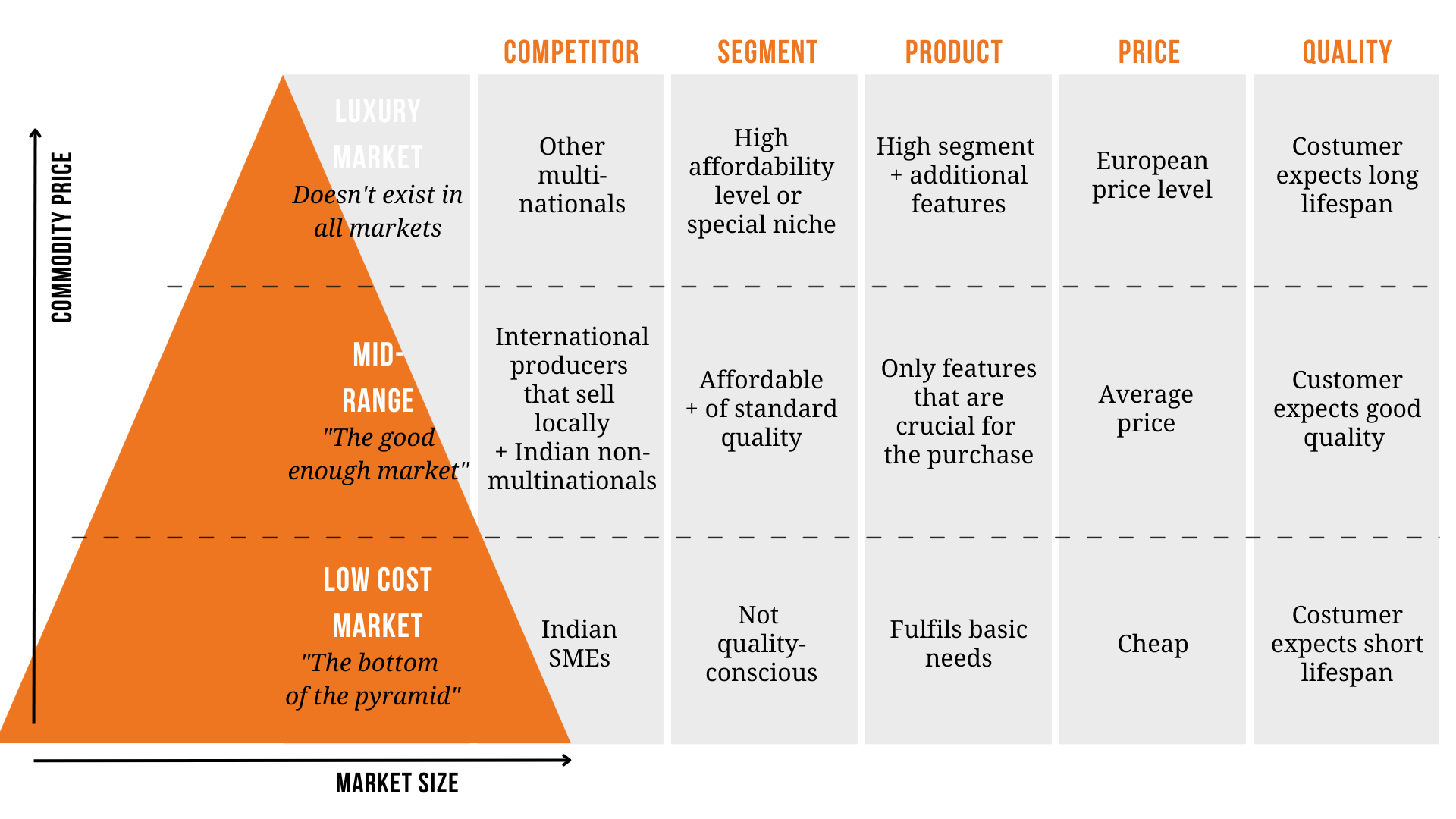India is one of the fastest growing consumer markets in the world, but what do those figures mean for your business? What percentage of the Indian population actually belongs to your target group? And how big is the customer base for your products or services?
The size of your potential customer base in India and their purchasing power depends entirely on the industry you are in and the type of products you offer, but there are some general assumptions we can make:
On the one hand, we see that the vast majority of India's nearly 1.4 billion people are young and poor and lack sufficient purchasing power to buy high-end, European products. Genexis, the European market leader in fiber optic modems, found that out too. Their modems were far too developed for the Indian consumer, so they built a special model for the Indian market.
On the other hand, India's middle class is expanding at lightning speed, increasing the demand for better products. The Indian middle class often sees foreign products as being of better quality, and this creates opportunities for international companies such as the Dutch clothing brand Scotch & Soda noticed. They opened 8 stores in India in 3 years and are now serving the fast-growing middle class online through their e-commerce platform.
This schematic representation of the Indian market provides a better understanding of what to expect and how best to rate your product or service:
The top end of the Indian market
In some sectors in India, there is no high-end market, but for others, such as fashion and electronics, for example, there is a large market. These consumers are often located in and around the largest cities, such as Delhi, Mumbai and Bangalore, but they cannot all be grouped under the same customer profile.
In India, having a specific, regional strategy is important to sell successfully. That means that within this segment, in principle, you must assume a small, exclusive group of consumers. Many companies think they can get around the regional approach by focusing entirely on e-commerce. A smart move when you consider India's rapid digital development.
However, as an entrepreneur, you must take into account the strict regulations in this area, it is currently still not possible for foreign companies to sell online directly to Indian consumers.
The Indian mid-segment
Many European companies have the idea that they can offer their high-tech, European products in the growing middle segment as well. But once they make their market entry, they find out that the Indian middle class still has much lower purchasing power than elsewhere.
In the first instance, therefore, it is smart to leave this segment out of the calculations for a while and in time, after you have started up in the higher segment, start thinking about how you can adapt your product to better suit the needs and price level of the Indian middle segment. After all, if you start focusing on the middle segment in addition to the high end, you might triple your sales market in a short time.
Workshop: Market entry in India
Starting to export to India can be challenging for European companies who are not so familiar with the country. IndiaConnected helps over 100 companies every year with their activities in India. We work with local experts in all sectors and can therefore offer you a helping hand in shaping a successful market strategy for your business in our tailor-made workshops:
We will give you more insight into what is involved in your market entry in India.
You will receive valuable feedback on your current India strategy from independent experts.
Expertise in every field: sales, manufacturing, legal, tax, finance, supply chain, recruitment, etc.
Our workshop usually lasts about 2 hours. Our experts will work with you to explore your issue and formulate possible answers and strategies. Afterwards, you will receive a report.


